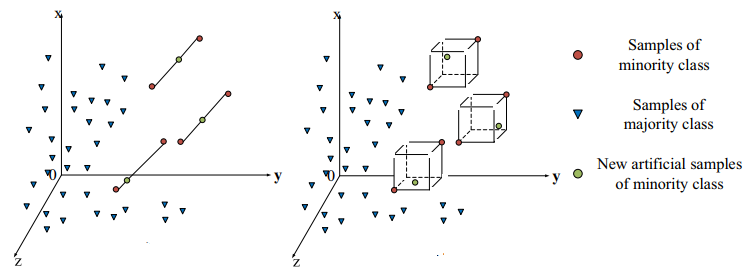Efficient Fraud Detection in Ethereum Blockchain through Machine Learning and Deep Learning Approaches
Main Article Content
Abstract
Background: This paper tackles the critical challenge of detecting fraudulent transactions within the Ethereum blockchain using machine learning techniques. With the burgeoning importance of blockchain, ensuring its security against fraudulent activities is crucial to prevent significant monetary losses. We utilized a public dataset comprising 9,841 Ethereum transactions, characterized by attributes such as gas price, transaction fee, and timestamp.Methods: Our approach is bifurcated into two core phases: data preprocessing and predictive modeling. In the data preprocessing phase, we meticulously process the dataset and extract pivotal features from transactions, setting the stage for efficient predictive modeling.Findings: For predictive modeling, we employed several machine learning algorithms to discern between fraudulent and legitimate transactions. Our evaluation encompassed algorithms like decision trees, logistic regression, gradient boosting, XGBoost, and an innovative hybrid model that melds random forests with deep neural networks (DNN).Novelty: Our findings underscore that the proposed model boasts a precision rate of 97.16%, marking a substantial leap in fraudulent transaction detection on the Ethereum blockchain in comparison to prevailing methodologies. This paper augments the current efforts aimed at bolstering the security of blockchain transactions using sophisticated analytical strategies..
Article Details
References
Nakamoto, S., 2008. [online] Bitcoin.org. Available at https://bitcoin.org/bitcoin.pdf.
Namecoin.org. 2014. Namecoin. [online] Available at https://www.namecoin.org.
Peters, G., Panayi, E. and Chapelle, A. "Trends in Crypto-Currencies and Blockchain Technologies: A Monetary Theory and Regulation Perspective." Journal of Financial Perspectives, Vol. 3, No. 3, 2015.
A. Bogner. "Seeing is understanding: Anomaly detection in blockchains with visualized features." In Proceedings of the 2017 ACM International Joint Conference on Pervasive and Ubiquitous Computing and Proceedings of the 2017 ACM International Symposium on Wearable Computers, UbiComp '17, pages 5–8. ACM, 2017.
Chen, Xuhui & Ji, Jinlong & Luo, Changqing & Liao, Weixian & Li, Pan. "When Machine Learning Meets Blockchain: A Decentralized, Privacy-preserving and Secure Design." In the 2018 IEEE International Conference on Big Data (Big Data), 2018.
Aziz, R.M. Cuckoo search-based optimization for cancer classification: A new hybrid approach. J. Comput. Biol. 2022, 29, 565–584.
Panarello, A.; Tapas, N.; Merlino, G.; Longo, F.; Puliafito, A. Blockchain and IoT integration: A systematic survey. Sensors 2018, 18, 2575.
Aziz, R.M.; Baluch, M.F.; Patel, S.; Kumar, P. A Machine Learning based Approach to Detect the Ethereum Fraud Transactions with Limited Attributes. Karbala Int. J. Mod. Sci. 2022, 8, 139–151.
Brauneis, A.; Mestel, R.; Theissen, E. What drives the liquidity of cryptocurrencies? A long-term analysis. Financ. Res. Lett. 2021, 39, 101537.
Chow SS, Choo KKR, Han J (2021) Editorial for accountability and privacy issues in blockchain and cryptocurrency. Futur Gener Comput Syst 114:647–648
Azhahudurai, K. ., & Veeramanikandan, V. . (2023). Artificial Flora Optimization with Deep Learning Enabled Air Pollution Monitoring System in IoT Environment. International Journal of Intelligent Systems and Applications in Engineering, 11(4s), 22–34. Retrieved from https://ijisae.org/index.php/IJISAE/article/view/2568
Anthony, Njoku & Shafik, Mahmoud & Kurugollu, Fatih & Atlam, Hany. (2022). Anomaly Detection System for Ethereum Blockchain Using Machine Learning. 10.3233/ATDE220608.
Rabieinejad, Elnaz & Yazdinejad, Abbas & Parizi, Reza. (2021). A Deep Learning Model for Threat Hunting in Ethereum Blockchain. 10.1109/TrustCom53373.2021.00160.
J, Lohith & K, Anusree & P, Guru & Srinivasan, Pooja. (2023). TP-Detect: trigram-pixel based vulnerability detection for Ethereum smart contracts. Multimedia Tools and Applications. 1-15. 10.1007/s11042-023-15042-4.
Lashkari, Bahareh & Musilek, Petr. (2023). Detection and Analysis of Ethereum Energy Smart Contracts. Applied Sciences. 13. 6027. 10.3390/app13106027.
Agarwal, Rachit & Thapliyal, Tanmay & Shukla, Sandeep. (2022). Analyzing Malicious Activities and Detecting Adversarial Behavior in Cryptocurrency based Permissionless Blockchains: An Ethereum Usecase. Distributed Ledger Technologies: Research and Practice. 1. 1-21. 10.1145/3549527.
V. Aliyev, "Ethereum fraud detection dataset," Jan 2021. Available: https://www.kaggle.com/datasets/vagifa/ethereumfrauddetection-dataset/
Hilbe JM (2016) Practical guide to logistic regression. crc Press; 2016 Apr 5.
Koc¸ak B, Durmaz ES¸, Ates¸ E, K?l?c¸kesmez O¨ (2019) Radiomics with artificial intelligence: a practical guide for beginners. Diagn Interv Radiol 25(6):485
Mr. Vaishali Sarangpure. (2014). CUP and DISC OPTIC Segmentation Using Optimized Superpixel Classification for Glaucoma Screening. International Journal of New Practices in Management and Engineering, 3(03), 07 - 11. Retrieved from http://ijnpme.org/index.php/IJNPME/article/view/30
Sreejith S, Rahul S, Jisha R (2016) A real time patient monitoring system for heart disease prediction using random forest algorithm. In: Advances in signal processing and intelligent recognition systems: Springer, pp 485–500
Aziz R, Verma C, Srivastava N (2016) A fuzzy based feature selection from independent component subspace for machine learning classification of microarray data. Genomics Data 8:4–15
Musheer RA, Verma C, Srivastava NJSC (2019) Novel machine learning approach for classification of high-dimensional microarray data. Soft Comput 23(24):13409–13421
Ahamed BS, Arya S (2021) LGBM classifier based technique for predicting Type-2 Diabetes. Eur J Mol Clin Med 8(3):454–467
Aziz R, Verma CK, Srivastava N (2018) Artificial neural network classification of high dimensional data with novel optimization approach of dimension reduction. Ann Data Sci 5(4):615–635
Ahamed BS (2021) Prediction of Type-2 Diabetes using the LGBM classifier methods and techniques. Turk J Comput Math Educ (TURCOMAT) 12(12):223–231
Fan S, Shuhui SF, Haoran X, Xiaochun C (2021) Al-SPSD: antileakage smart Ponzi schemes detection in blockchain. Inf Process Manag 58(4):102587
Chen W, Cui J, Guo X, Chen Z, Lu Y (2021) Misbehavior Detection on Blockchain Data. In: Blockchain Intelligence: Springer, NeI York, 95–133.

